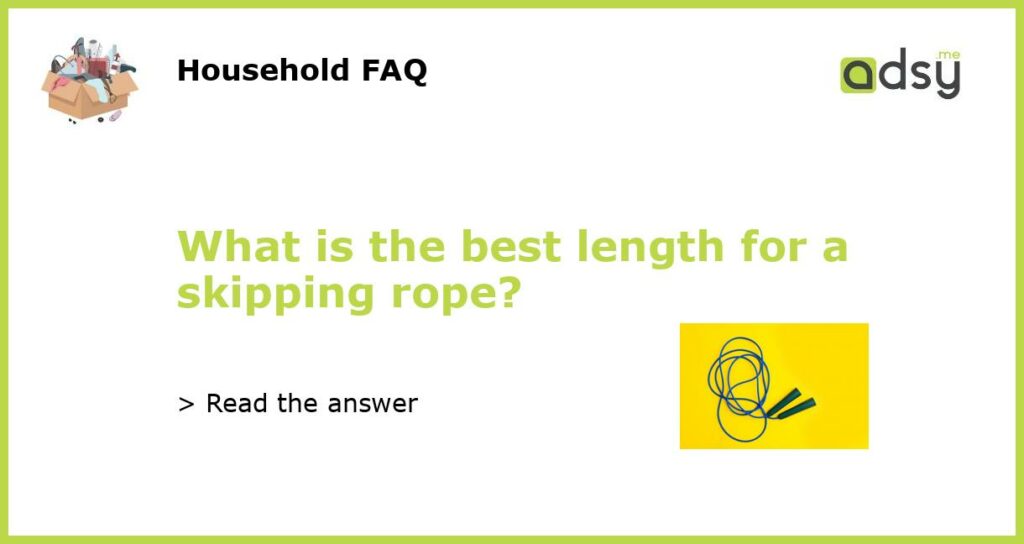What is the best length for a skipping rope?
Choosing the right length for a skipping rope is crucial to ensure proper form and efficiency during workouts. The length of a skipping rope can vary depending on factors such as the height and skill level of the user. Rather than a one-size-fits-all approach, it’s important to consider a few key factors to determine the best length of a skipping rope for you.
Factors to consider when determining skipping rope length
When determining the best skipping rope length for yourself, there are a few key factors to consider:
Height: Your height is one of the most important factors to consider when choosing a skipping rope. Taller individuals typically require longer ropes, while shorter individuals typically require shorter ropes.
Experience level: Your experience level with skipping rope workouts should also be taken into account. Beginners may find it easier to start with a slightly shorter rope to help with coordination, while more advanced users may prefer longer ropes for a greater challenge.
Workout type: The type of skipping rope workouts you plan to do can also influence the length of the rope. For speed and double-under workouts, a shorter rope is typically preferred, while for freestyle or CrossFit workouts, a longer rope may be more suitable.
Personal preference: Ultimately, personal preference plays a significant role in determining the optimal length of a skipping rope. Some individuals may find they perform better with a slightly shorter or longer rope, so it’s important to listen to your own body and adjust accordingly.
How to measure the right skipping rope length
Once you’ve considered the factors above, it’s time to measure the right skipping rope length for you. Here is a step-by-step guide:
1. Stand on the middle of the rope: Step on the middle of the skipping rope with one foot and pull the handles up towards your armpits. The handles should reach about chest level.
2. Adjust the length: If the handles are significantly above or below chest level, adjust the length as needed. Most skipping ropes have adjustable handles that can be shortened or lengthened to suit your preferences.
3. Test it out: After adjusting the length, take the skipping rope for a test spin. Perform a few jumps to see if the length feels comfortable and allows you to maintain proper form.
4. Make additional adjustments: If necessary, make additional adjustments to the rope length until you find the perfect fit. It may require a few tries to get it just right, but it’s worth taking the time to find the best length for your skipping rope workouts.
Benefits of using the correct skipping rope length
Using the correct skipping rope length offers several benefits:
Efficiency: A well-fitted skipping rope allows for optimal efficiency during workouts, ensuring smooth and precise movements.
Reduced risk of injury: Using a skipping rope that is too long or too short can increase the risk of tripping or tangling, leading to potential injuries. By using the correct length, you can minimize this risk.
Improved form and technique: The right skipping rope length allows you to maintain proper form and technique, maximizing the effectiveness of your workouts.
Enhanced performance: When you have the right length of skipping rope, you can focus on improving your skills and pushing your limits without the distractions of an ill-fitted rope.
Choosing the best length for a skipping rope is a combination of considering factors such as height, experience level, workout type, and personal preference. By measuring the skipping rope correctly and making any necessary adjustments, you can ensure optimal performance, efficiency, and reduced risk of injury. Take the time to find the best length for your skipping rope workouts, and enjoy the benefits of a well-fitted rope.





![Velites Skipping Rope for Crosstraining Fire 2.0 Weighted Speed Rope For Double Unders [Weights Not Included]. Also for Fitness Boxing and MMA](https://m.media-amazon.com/images/I/41KALb5YGpL.jpg)
